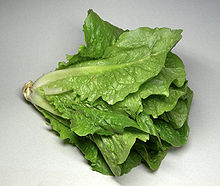Outbreaks happen all the time. The majority are avoidable and can be linked to a few factors or bad decisions. While I’m a self-described outbreak junkie, it’s not the gore of vomit and barf associated with tragic incidents that I’m interested in. While the stories are important, I’m not into embellishment to scare folks into behavior change. The philosophy I subscribe to is to present folks who make decisions, from the teenage produce stock boy to the CEO of a food company, with the risks and consequences of their actions. And let them make a decision. Hopefully they choose to avoid making people sick.
I’m an outbreak junkie because the sick and the dead are real people with families; individuals whose lives changed because they ate something. Something, for the most part, that wasn’t supposed to make them ill.
And if nothing is learned from those illnesses, and changes made, food doesn’t get any safer.
In an article in the Yuma Sun detailing produce farmer responses to upcoming Food Safety Modernization Act-related regulatory changes Kurt Nolte, executive director of Yuma County Cooperative Extension references a 2010 E. coli O145 outbreak linked to fresh produce. Investigators connected 33 cases (12 of which were hospitalized) with Arizona grown romaine lettuce.
“Data suggests the grower followed all guidelines,” Nolte said. An investigation traced the probable cause to a leaking septic tank in a vehicle park some distance away.
It’s frustrating when food folks say that all the right guidelines were followed and illnesses still happened. When this happens food safety professionals aren’t doing their jobs. Either the guidelines aren’t as good as they thought or implementation faltered (or a combination of both).
What was left out is that the FDA environmental assessment showed that maybe all guidelines weren’t followed. While the ultimate source of contamination was the septic tank, water used for diluting pesticides and fertilizers, and for irrigation, is the most likely vehicle of pathogen transmission onto/on the farm.
Liquid pesticides and fertilizers used on the lettuce crops were diluted with both municipal and local irrigation canal waters. Municipal water is treated and periodically monitored. Based on these factors, the municipal water was not considered a reasonably likely source of contamination.
Arizona Leafy Green Marketing Agreement guidelines do have parameters for microbial testing of water that is applied directly to the product, which includes microbial testing. Would be nice to see the history of the test results from the producer for the irrigation canals (and if it did happen, it would have been nice to see mention in the FDA environmental assessment. If the sampling didn’t provide any indicators of a problem the guidelines need to be revisited as Nolte notes, “From that incident, our charge is to research the risk of septic tanks leaking deep underground that may leach into a dirt irrigation ditch.”
Yeah, and show other producers the consequences of mixing potentially risky irrigation water with fungicides and pesticides.
